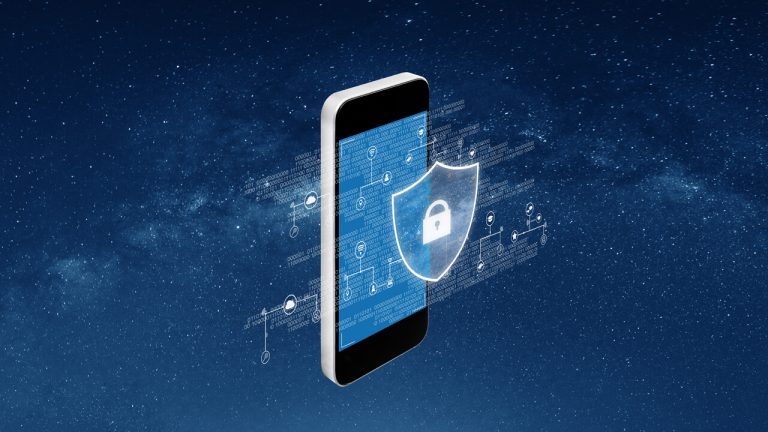The techniques required to secure sensitive data kept on and transferred by smartphones, laptops, wearables, tablets, and other portable devices are mobile security. Mobile device security aims to prevent unauthorized individuals from obtaining access to the company’s network. It is just one part of a larger security strategy.
What is the significance of mobile device security?
With much more than 50% of business PCs now being mobile, network security faces new issues, as it needs to account for all of the uses and locations that individuals need of the company network. Malicious phone applications, phishing attempts, data leaks, malware, and unprotected Wi-Fi networks are all severe hazards to smartphones. Furthermore, businesses must plan for the likelihood of an employee misplacing or stealing a mobile device. Companies should take explicit, preemptive efforts to limit the possibility of a security compromise.
What are the advantages of securing your mobile device?
Mobile device security offers the following benefits, often known as mobile device management:
- Mobile device security can control device upgrades remotely.
- Enforcement of security policies
- Automated device registration
- Regulatory compliance
- Encouragement of “bring your device” (BYOD)
- Data backup
- Application control
Above everything, mobile device security safeguards against malicious or unknown individuals gaining access to important company information.
What is the process of securing a mobile device?
Mobile device security necessitates a multi-layered methodology and an investment in business solutions. While there are some essential factors to mobile device security, each company must determine what works best for their network.
Here are some mobile security recommended guidelines to get you started:
Create, share, and implement clear policies and procedures:
Mobile device policies are just as good as a company’s competence to communicate them effectively to its workforce. Clear standards for mobile device security must include:
- Allowed operating system levels
- Whether IT can erase a device remotely
- What devices are allowed to use
- Requirements for passwords and how often they should be updated
- What information can and cannot be accessed by the company on a personal phone
Password protection:
Creating a secure password is among the most fundamental techniques to avoid unwanted access to a mobile device. However, weak passwords are still a chronic issue that leads to most data intrusions. Employees having the same password for their smartphone, email, and work-related accounts is another prevalent security issue. Workers must generate unique, strong passwords (at least eight characters long) and separate credentials for different accounts.
Use biometrics to your advantage:
Some businesses are turning to biometrics as a better substitute for traditional means of mobile access security, such as passcode. When a system employs verifiable biological traits such as fingerprint, face, iris, or voice recognition for identity and authorization, this is known as biometric verification. On smartphones, various biometric verification solutions are now available that are simple to use and set up.
Avoid public Wi-Fi:
Mobile devices are only as safe as their connection to send and receive data. The company must educate workers about the risks of using public Wi-Fi connections, prone to cyberattacks. Hackers can quickly infiltrate a device, access the system, and steal information. The best safeguard is to promote sensible user activity and forbid the usage of open Wi-Fi connections regardless of ease.
Beware of applications:
Malicious applications are one of the most rapidly developing mobile device risks. When an individual installs one unintentionally, unauthorized access to the company’s data and network is allowed for professional or personal purposes. Companies have two alternatives to tackle this growing threat: educate workers about the risks of installing unauthorized applications or prohibit workers from installing particular applications on their devices entirely.
Mobile device encryption:
A built-in encryption capability comes standard on several mobile devices. To secure their device, users must discover this option and input a passcode. Data turns into a code that can only be viewed by permitted users using this approach. This technique is crucial in loss, as it prohibits illegal entry.
What types of mobile device security are there?
A comprehensive security plan has numerous features. The following are standard features of a mobile security solution:
Enterprise Mobile Management platform: In addition to establishing internal device restrictions to prevent unwanted access, having an Enterprise Mobile Management (EMM) platform that allows IT to obtain insightful information to detect possible threats is critical.
Email security: Cybercriminals most commonly use email to spread malware and other threats. Businesses must have modern email security to identify, prevent, and respond to attacks sooner and avoid data loss and secure sensitive data in transit with end-to-end encryption to defend against such threats.
Endpoint protection: This method safeguards company systems accessed remotely by portable devices. Endpoint protection safeguards businesses by assuring that mobile devices adhere to security guidelines and notifying security personnel of suspected risks before they may harm. IT admins may additionally supervise operating activities and data backup procedures with endpoint security.
VPN: A Virtual private network links a private network to a public network. If their computer equipment connects to the private network, individuals could transmit and get data over public or shared networks. Branch offices and remote users can safely access company apps and resources thanks to Virtual private network encryption software.
Secure web gateway: By implementing corporate security guidelines and protecting against malware and phishing in real-time, a safe web gateway safeguards against internet security risks. Secure web gateway is highly significant in cloud security since this form of protection can detect an attack on one branch and promptly halt it on other components.
Cloud access security broker: A cloud access security broker is a solution that stands between cloud service providers and consumers to implement cloud-based security, governance, and compliance requirements. CASBs assist enterprises in extending their on-premises security measures to their cloud platform.

